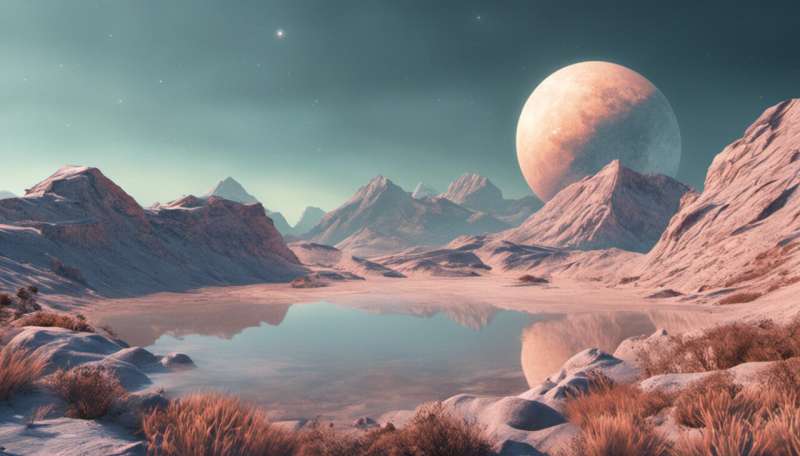How the sun's influence on the remote planet Uranus changes its brightness in the sky

Changes in solar activity influence the colour and formation of clouds around the planet, researchers at Oxford and Reading universities found.
The icy planet is second furthest from the sun in the solar system and takes 84 Earth years to complete a full orbit – one Uranian year.
The researchers found that, once the planet's long and strange seasons are taken into account, it appears brighter and dimmer over a cycle of 11 years. This is the regular cycle of solar activity which also affects sun spots.
Karen Aplin of Oxford University's Department of Physics carried out the research with Giles Harrison, an atmospheric physicist from the Department of Meteorology at the University of Reading.
Dr. Aplin said: "The atmosphere around Uranus is one of the coldest in the solar system, but still contains clouds and ice, like our own atmosphere here on Earth.
"The changing brightness of the planet shows that something is happening to the clouds. We have found that the change is caused by two processes.
"One is chemical, caused as fluctuating levels of UV sunlight alters the colour of particles in the atmosphere. The other is due to high-speed particles from outside the solar system, known as galactic cosmic rays, bombarding the atmosphere and influencing the formation of clouds."
The scientists used data from telescopes on Earth, as well as cosmic rays measured by the Voyager 2 spacecraft, to make their assessment.
Professor Harrison said: "The sun has a magnetic field, diverting cosmic rays away from the solar system, including here on Earth. This protection is reduced when solar activity is at its lowest every 11 years, meaning more cosmic radiation gets through.
"The atmosphere of Uranus is, like Neptune's, effectively a giant 'cloud chamber," able to respond to the incoming energetic particles. It is amazing that the effects are visible even from Earth, more than a billion miles away."
The research, published in the journal Geophysical Research Letters, follows previous research by the same authors showing a similar effect in the atmosphere of Neptune, the farthest planet from the sun. The papers provide the first evidence that two planetary atmospheres have similar variations, in both cases originating from their host star.
The full paper, "Solar-Driven Variation in the Atmosphere of Uranus," can be read in the journal Geophysical Research Letters.
More information: K. L. Aplin et al. Solar-Driven Variation in the Atmosphere of Uranus, Geophysical Research Letters (2017). DOI: 10.1002/2017GL075374
Journal information: Geophysical Research Letters
Provided by University of Oxford




















